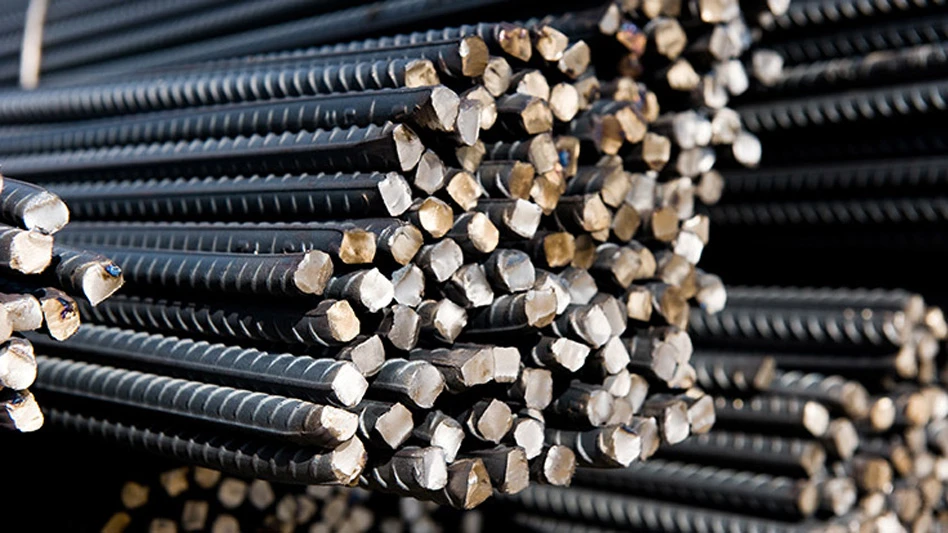Measured strictly by volume, skid-steer loaders and forklift trucks cannot carry the same weight compared to the massive lifting done by large wheel loaders and hydraulic material handlers. But that doesn’t mean the larger machines have made the smaller ones obsolete in the recycling industry. Quite to the contrary. At scrap yards, material recovery facilities (MRFs) and other recycling locations throughout the world, compact machines are routinely the most common machines on the property.
Recyclers of paper, metals and curbside materials rely on forklifts and compact skid-steer loaders to carry the mobile material handling load. Even high-volume operators with larger handlers and loaders still use the smaller machines to handle appropriate loads.
LIFT AND CARRY. Despite the consolidation of many companies and facilities, not all recycling takes place on a massive scale. Even at large facilities operated by multi-national companies, less common scrap grades still need to be sorted and handled.
| LOCKED IN PLACE |
|
The theft of loaders and industrial trucks is a growing problem. The Equipment Lock Co. (TELC), Hedgesville, W. Va., offers a solution in the form of a "universal anti-theft/safety device." Its Skidsteer Lock is an anti-theft device that fits machines made by "every manufacturer on the market today," and even secures "a majority of the models dating back to the early 1970s," according to TELC. When in place, the Skidsteer Lock immobilizes the drive controls. When not in use, the device "neatly collapses and stores in the locked position inside the operator’s cab— completely out of the way," TELC says. The Skidsteer Lock and other TELC products are available at equipment dealerships and on-line at www.equipmentlock.com. |
The need to handle these smaller loads (sometimes in confined spaces) means plenty of work is suited to forklift trucks handling pallets, drums, barrels, single bales and Gaylord boxes.
In a mobile material handling survey conducted two years ago by Recycling Today, more than 90 percent of the companies responding said they use one or more forklifts. The percentage outweighs those for all other types of machines, including skid-steer loaders and wheeled loaders. In most cases, recyclers own more than one forklift, with survey respondents owning an average of 3.8 of the industrial trucks.
These results also show that, despite consolidation, forklifts appear to be even more ubiquitous than they were in 1997. In the 1997 Recycling Today survey, 80 percent of respondents operated one or more forklifts, compared to greater than 90 percent in the 2001 survey. In 1997, 46 percent of the forklift owners used just one of the machines, while more recently 64 percent of forklift owners said they use more than one.
At MRFs and paperstock plants, forklifts have proven to be particularly indispensable for transporting, stacking and loading finished bales. The nimble machines pick up where the conveyor system leaves off—at the baler.
A forklift operator and truck can be seen picking up finished bales shortly after they are tied and taking the bale either to a storage area or—in cases where inventory is held to a minimum—directly into a truck trailer or boxcar.
Similarly, nonferrous metal recyclers who sort various alloys into Gaylord boxes or similarly sized containers use forklifts to convey full containers to the storage or shipping area.
With volumes that don’t match the massive output of automobile shredders (who more often use hydraulic handlers and wheel loaders), electronics shredder operators can use forklifts to handle pallet-loads of incoming materials as well as small bins or other containers of shredded commodities produced.
The competitive forklift market segment ensures recyclers a variety of choices.
The forklift line available from just one manufacturer—Mitsubishi Forklift Trucks, Houston—offers a range of configurations, engine sizes and operating weights. The Mitsubishi offerings include a line of electric counterbalanced forklifts, a line of electric narrow-aisle products and internal combustion engine-driven models divided by size and tire style (pneumatic or cushion).
Linde Lift Truck Corp. USA, Summerville, S.C., is one of several manufacturers offering what it touts as high-endurance machines for rugged scrap environments.
Linde offers Recycling and Foundry Packages for its lift trucks aimed at preventing problems common in these environments. The company lists overheating, transmission failures, severe brake wear patterns and "out of control" maintenance expenses among the problems light-duty trucks in heavy-duty environments might experience.
The Linde Recycling Package offers cylinder tube guards to protect the hydraulic lines; tapered front fenders to "prevent bale snagging;" an enclosed alternator to prevent contamination and flying sparks from causing damage; and air intake screens to reduce contamination dust damage in the engine compartment as solutions.
CONTROLLED SKIDDING. Skid-steer loaders, which can be more easily equipped with a variety of attachments, are often considered more multi-faceted than forklifts.
These compact loaders have replaced forklifts in some instances and are also capable of working with loose materials.
Skid steers appear to be growing in popularity with recyclers, according to the 2001 Recycling Today mobile material handling survey. While 49 percent of respondents owned one or more skid steers in 1997, the more recent survey revealed a 64 percent ownership rate among respondents.
A testament to the machines’ versatility is the variety of attachments marketed by manufacturers such as Bobcat Inc., West Fargo, N.D., John Deere, Moline, Ill., and Caterpillar Inc., Peoria, Ill.
A John Deere promotional piece notes its compact loaders can be equipped with the following attachments:
• buckets ranging in size from 3 feet to 7 feet wide
• a combination grapple bucket ideal for handling loose scrap
• a four-in-one bucket that also digs
• tooth bars that allow buckets to scarify pavement
• hydraulic breakers
• a backhoe dipper arm
• pallet forks (in several sizes and space configurations)
• an angle broom for cleaning jobs
• a cement mixer and a cold planer for paving applications.
Scrap processors and demolition contractors also attach mobile shears to the largest skid steer models.
Caterpillar Inc. currently has 10 skid steer models, the largest being the Cat 262. This machine can be coupled with Cat’s 360-degree rotation mobile shears, described by the company as, "versatile tools widely used for demolishing steel structures and preparing bulk scrap (such as cars, farm machinery and railroad cars) for further processing."
Sales of machines like these to demolition contractors, scrap processors and other recyclers should keep compact loaders on the job well into the future.
The author is the editor of Recycling Today and can be contacted via e-mail at btaylor@RecyclingToday.com.

Explore the November 2003 Issue
Check out more from this issue and find your next story to read.
Latest from Recycling Today
- Lux Research webinar examines chemical recycling timetables
- Plastics producer tracks pulse of wire recycling market
- Republic Services, Blue Polymers open Indianapolis recycling complex
- Altilium produces EV battery cells using recycled materials
- Brightmark enters subsidiaries of Indiana recycling facility into Chapter 11
- Freepoint Eco-Systems receives $50M loan for plastics recycling facility
- PET thermoform recycling the focus of new NAPCOR white paper
- Steel Dynamics cites favorable conditions in Q1






